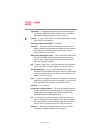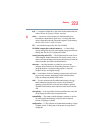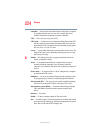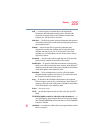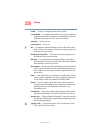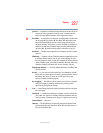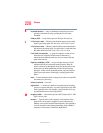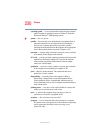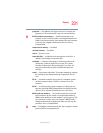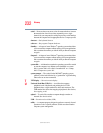
226
Glossary
5.375 x 8.375 ver 2.3
enable — To turn on a computer option. See also disable.
executable file — A computer program that is ready to run. Application
programs and batch files are examples of executable files. Names of
executable files usually end with a .bat or .exe extension.
extension — See file extension.
external device — See device.
F
file — A collection of related information, saved on disk with a unique
name. A file may be a program, information used by a program, or a
document. See also document.
file allocation table (FAT) — The section of a disk that keeps track of
the location of files stored on the disk.
file name — A set of characters that uniquely identifies a file within a
particular folder. It consists of two parts: the actual name and the file
name extension. See also file extension.
file extension — The three characters following the period (pronounced
“dot”) at the end of a file name. The extension indicates the type of
file. Examples are .exe for program files and .hlp for help files. See
also file name.
folder — Also called directory. A container for organizing files saved to
a disk. A folder is symbolized on screen by a graphical image (icon)
of a file folder. A folder can contain files and other folders.
format — (verb) To prepare a blank disk for use with the computer’s
operating system. Formatting creates a structure on the disk so the
operating system can write information to the disk or read
information from it.
frontside bus — The primary pathway (bus) between the CPU and the
computer’s main memory. Also called “system bus.” See also bus.
function keys — The keys labeled F1 through F12, typically located on
the keyboard. Their function is determined by the operating system
and/or individual programs.
G
gigabyte (GB) — A unit of data equal to 1,073,741,824 bytes (1024 x
1024 x 1024 bytes). See also byte.







